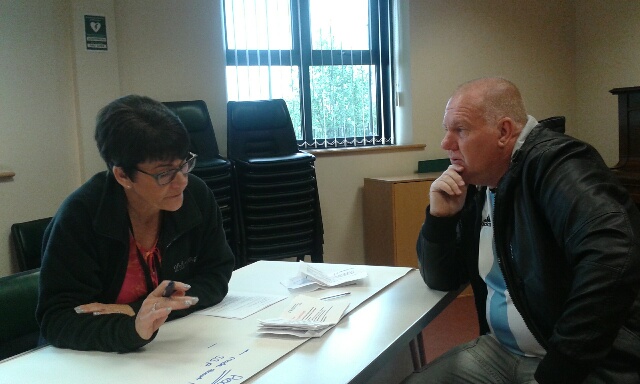Journey mapping with our customers
Wednesday 22nd of November 2017

Jeremy Brock, Customer Involvement Manager, Thirteen Group talks through his experience of learning about their customers through journey mapping.
In common with most housing organisations, at Thirteen we are reshaping our service offer to ensure that customers get the best possible experience, and also to ensure we operate in as efficient a way as possible.
Alongside traditional approaches of service and process reviews informed by customer feedback and satisfaction scores, Customer Journey Mapping (CJM) is a tool that can bring the customer experience right to the heart of considerations for service review and redesign.
CJM provides an opportunity to look at services through the lens of the customer, and can provide invaluable insight that cannot easily be captured in other ways. It also has the added value of lending itself to a variety of ways of communicating the outcomes that can have real impact. For example we have used video clips, photographs, quotes and Case Studies, and used digital storytelling tools such as SWAY (google it!) to promote our findings.
CJM is a straightforward approach and we are not experts, though we are learning quickly. CJM requires planning, but the steps are simple ones and we recommend just trying it and seeing what works for you.
We started along the road of using this tool when a Service Director wanted to understand more about how customers experienced the process of making a complaint and asked us to explore this. We began by obtaining details of those who had recently made a complaint and phoned a random sample to invite them to meet with us for a conversation about their experience. We offered shopping vouchers in return for their time and we arranged to meet in a local community venue. And the majority of those contacted were more than happy to share their experiences with us!
The conversations with customers were led by them and gave us an understanding of their journey through the process and crucially, how they felt about it. Insight gained in this way provides a useful indicator of any disappointments experienced in the process and where expectations were not met. It also captures positive experiences.
At the conclusion of the exercise we had interviewed ten customers and captured a raft of areas for learning and improvement. We compiled ten Journey Maps and an Action Plan and shared this with our project sponsor for consideration and implementation. In subsequent projects we have produced fewer maps that summarise several customers journeys as compiling the maps can be time consuming, but we have produced case studies for each customer we interviewed. We find this a more useful approach.
At a time when the value of customer involvement activity is being challenged, CJM is an activity that can produce a real value to the organisation, and will be a key approach to customer involvement for us in the future.